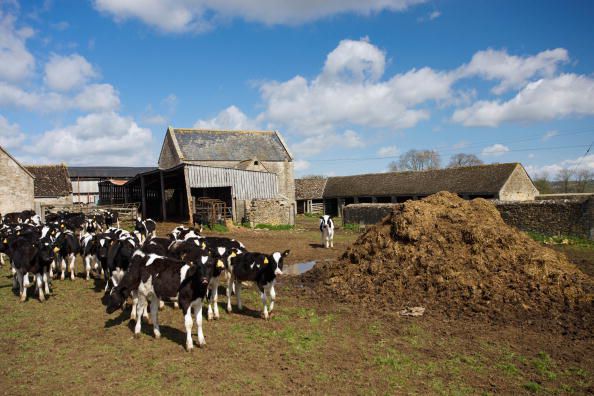
The U.S. Department of Agriculture (USDA) predicts that Americans will eat 222.2 pounds of red meat and poultry this year, a new record. The United Nations expects global meat consumption to double by 2050, requiring an enormous number of livestock animals.
A new study from Georgia Tech examines the main byproduct of all those extra animals: waste. It’s a growing problem—but one with a few potential upsides if people are resourceful and willing to get down into the filth.
Claiming to have created “the first global estimate of annual recoverable human and animal fecal biomass,” Georgia Tech researchers looked at the growing amount of waste across the planet to see if any of it could be useful. Joe Brown, an assistant professor in Georgia Tech’s School of Civil and Environmental Engineering, says in a press statement:
“Exposure to both human and animal waste represent a threat to public health, particularly in low-income areas of the world that may not have resources to implement the best management and sanitation practices. But estimating the amount of recoverable feces in the world also highlights the enormous potential from a resource perspective.”
The most valuable part of this waste may be all the metals that lay within. Livestock ingesting metal is a common phenomenon— roughly 55 to 75 percent of the cattle slaughtered in the eastern United States alone have digested pieces of metal, whether that’s a nail, a piece of wire, or something more. If all the metal could be recovered from the waste of a million animals, it would be worth approximately $13 million.
The most recent year with reliable data, 2014, shows that there were 4.3 billion tons of recoverable waste. Within that waste, animal waste outnumbered the human equivalent by 5 to 1. Researchers looked at data from 2003 to 2014, and on top of that examined projections going into 2030. In that initial 11-year time period of waste, bio-matter (the polite term for feces) grew by over 57 million tons. By 2030, that number could be as big as five billion tons. Livestock waste would outweigh that from humans six to one.
Elements like phosphorus, nitrogen, and potassium could be salvaged from such waste. If current waste trends continue, the planet’s total annual fecal and urinary biomass could add up to quite a bit: 100 million tons of phosphorus, 30 million tons of potassium, 18 million tons of calcium, and 5.5 million tons of magnesium by the researchers’ estimates.
The researchers don’t deny that fecal matter is ultimately more of a problem then it is a solution—livestock creates 14.5 percent of all greenhouse gases across the globe, offering a significant contribution to global warming.
Waste will always exist. It’s also likely that, barring major shifts in global eating patterns, meat consumption will continue to remain at high levels. By highlighting how waste could be used and recycled, they want to show that this waste can help contribute to a cleaner planet.
